Home>Storage Ideas>Kitchen Storage>How To Remove Stains From Stainless Steel—Even Dark Water Stains
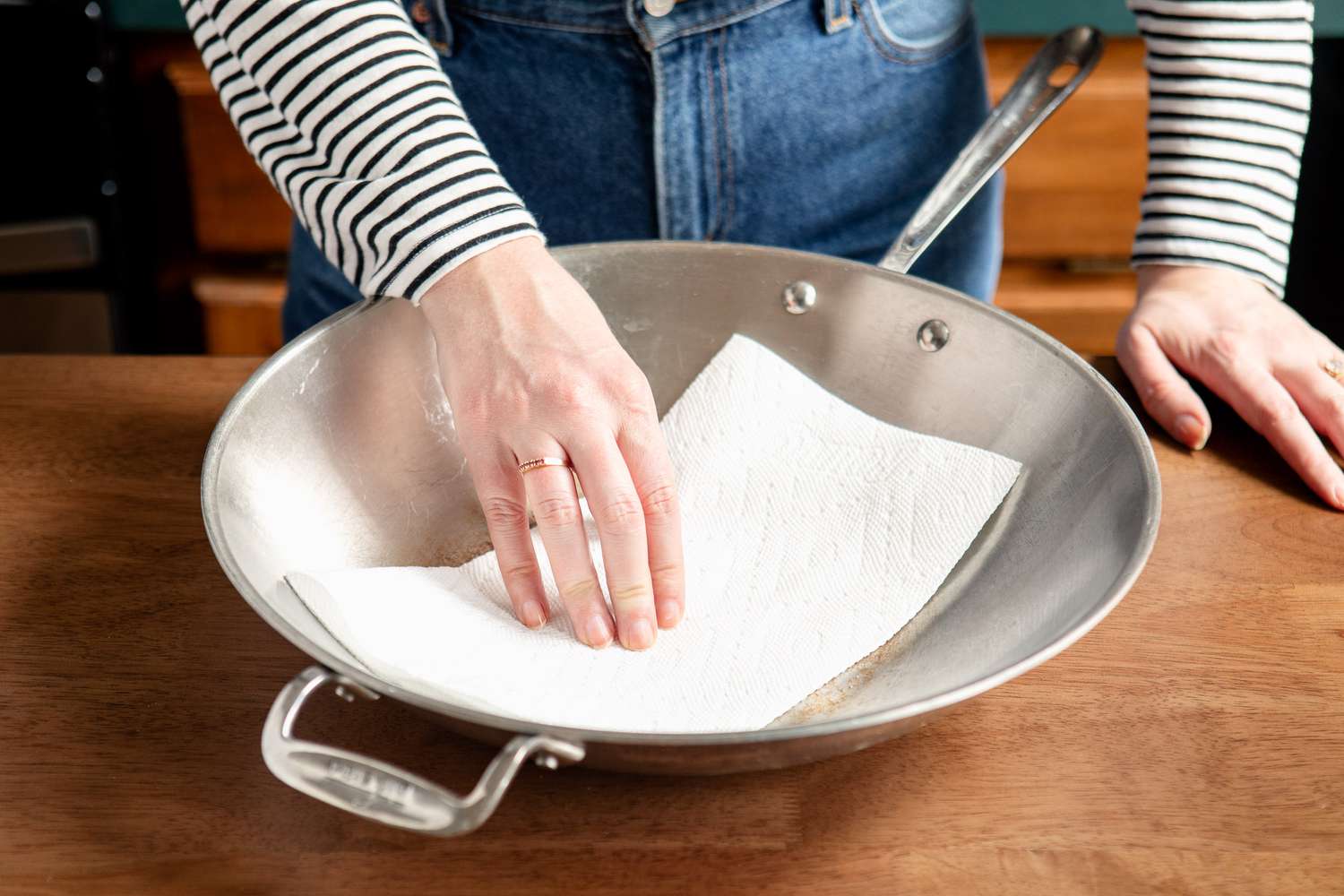

Kitchen Storage
How To Remove Stains From Stainless Steel—Even Dark Water Stains
Modified: August 28, 2024
Learn how to remove even the toughest stains from stainless steel with our effective kitchen storage ideas. Say goodbye to dark water stains and keep your kitchen looking pristine.
(Many of the links in this article redirect to a specific reviewed product. Your purchase of these products through affiliate links helps to generate commission for Storables.com, at no extra cost. Learn more)
Introduction
Welcome to our comprehensive guide on how to remove stains from stainless steel. Stainless steel is a popular choice for kitchen appliances and fixtures due to its durability and sleek appearance. However, even stainless steel can develop stains over time, which can diminish its aesthetic appeal. Whether you’re dealing with water stains, food stains, or other types of discoloration, we’re here to help you restore your stainless steel to its former glory.
Understanding how stains develop on stainless steel is essential in finding the right solution for removing them. Various factors can contribute to the formation of stains, such as improper cleaning techniques, exposure to certain substances, or even natural wear and tear. By identifying the cause of the stain, you can better tailor your cleaning approach and achieve optimal results.
Key Takeaways:
- Say goodbye to unsightly stains on your stainless steel surfaces with these 10 effective methods, from using vinegar to olive oil, ensuring a renewed and vibrant look for your kitchen and appliances.
- Understanding the causes of water stains and taking proper precautions are essential for successful stain removal, so you can restore your stainless steel to its former glory and maintain its durability.
Common Causes of Water Stains on Stainless Steel
One of the most common types of stains that develop on stainless steel is water stains. These can occur from the minerals present in water or from the water itself if it is hard or contains impurities. When water dries on the surface of stainless steel, it can leave behind unsightly marks.
To effectively remove water stains, it’s important to understand their underlying causes. Here are some common culprits:
- Hard Water: If your tap water contains high levels of minerals like calcium and magnesium, it is considered hard water. When hard water evaporates on stainless steel, it can leave behind mineral deposits that form stains.
- Chemicals in Water: Some areas have water with high chemical content, such as chlorine or fluoride. These chemicals can react with stainless steel surfaces and cause discoloration or stains.
- Standing Water or Pools of Liquid: Leaving water or other liquids on stainless steel surfaces for an extended period can lead to stains. This can happen in sinks, countertops, or even on appliances if spills are not promptly cleaned up.
- Improper Cleaning Techniques: Using abrasive cleaners, steel wool, or rough sponges on stainless steel can leave scratches or create a rough surface that is more prone to staining.
Now that we understand the causes of water stains, let’s move on to some general tips and precautions you should take before attempting to remove stains from stainless steel.
Understanding Stainless Steel Stains
Stainless steel is known for its resistance to corrosion and stains, but it is not completely immune to discoloration. Understanding the different types of stains that can affect stainless steel can help you identify the best method to remove them effectively.
There are three main types of stains that can occur on stainless steel:
- Surface Stains: Surface stains are superficial marks that sit on top of the stainless steel surface. They can be caused by fingerprints, smudges, or other oily substances. These stains are usually relatively easy to remove and can often be wiped away with a soft cloth and mild detergent.
- Pitting Stains: Pitting stains are small, localized areas of corrosion that can appear as tiny pits or holes in the stainless steel surface. These stains are typically caused by exposure to corrosive substances, such as salt, acids, or harsh cleaning chemicals. Removing pitting stains can be more challenging and may require specialized stainless steel cleaners or professional assistance.
- Water Stains: Water stains are a common problem on stainless steel surfaces, as mentioned earlier. These stains can vary in appearance, ranging from light spots to dark discoloration. Water stains are often caused by minerals present in hard water or by standing water that has been left to evaporate. There are various methods to remove water stains, and we will explore them in detail later in this article.
It’s important to note that the composition of stainless steel can also affect its resistance to stains. The most common types of stainless steel used in kitchen appliances and fixtures are 304 and 316. Both of these grades have excellent resistance to corrosion and stains, but 316 stainless steel is more resistant to pitting stains, making it especially suitable for environments with high exposure to corrosive substances, such as saltwater or industrial settings.
When it comes to removing stains from stainless steel, it’s crucial to choose methods and cleaners that are safe for the specific grade of stainless steel you’re working with. Always check the manufacturer’s instructions or consult a professional if you’re unsure about the appropriate cleaning products for your stainless steel surfaces.
Now that we have a better understanding of different types of stains that can affect stainless steel, let’s move on to some precautions you should take before attempting to remove stains.
Key Takeaways:
- Say goodbye to unsightly stains on your stainless steel surfaces with these 10 effective methods, from using vinegar to olive oil, ensuring a renewed and vibrant look for your kitchen and appliances.
- Understanding the causes of water stains and taking proper precautions are essential for successful stain removal, so you can restore your stainless steel to its former glory and maintain its durability.
Common Causes of Water Stains on Stainless Steel
Water stains are a common issue that can occur on stainless steel surfaces, especially in kitchens and bathrooms. These stains can be both unsightly and stubborn to remove, but understanding their causes can help you prevent and address them effectively.
Here are some common causes of water stains on stainless steel:
- Hard Water: One of the primary causes of water stains is hard water, which contains high levels of minerals like calcium and magnesium. When hard water droplets evaporate on stainless steel surfaces, they can leave behind mineral deposits that appear as stains. These stains are often white or light-colored.
- Chemical Reactions: Stainless steel can react with certain chemicals present in water, such as chlorine or fluoride, leading to discoloration or stains. These chemical reactions can sometimes cause dark water stains on the stainless steel surface.
- Standing Water: Allowing water to puddle or stagnant on stainless steel surfaces can lead to water stains. This can happen in sinks, countertops, or even on appliances. If water sits on the surface for an extended period, it has more time to interact with the stainless steel and potentially leave behind stubborn stains.
- Improper Cleaning Techniques: Using abrasive cleaners, steel wool, or rough sponges on stainless steel can cause scratches or create a rough surface that is more susceptible to staining. Additionally, using cleaners that are not specifically designed for stainless steel can damage the protective layer and make it more prone to water stains.
- Drying Techniques: The way water is dried off stainless steel surfaces can also contribute to water stains. For example, using a dirty or lint-filled cloth to dry the surface can leave behind particles that can create stains. Similarly, air-drying without proper ventilation can cause water to evaporate slowly and potentially leave behind marks.
Now that you are familiar with the common causes of water stains on stainless steel, it’s essential to take some precautions before attempting to remove them. These precautions will help prevent any further damage and ensure a successful stain removal process.
Precautions before Removing Stains
Before you begin the process of removing stains from your stainless steel surfaces, it’s important to take some precautions to ensure a safe and effective cleaning experience. These precautions will help you avoid further damage and maximize the chances of successful stain removal.
Here are some precautions to keep in mind:
- Read the Manufacturer’s Instructions: Different stainless steel products may have specific cleaning recommendations from the manufacturer. It’s crucial to read and follow these instructions to avoid using any cleaning agents or techniques that could potentially damage the surface.
- Test in a Small, Inconspicuous Area: Before applying any cleaning solution or method to the entire stainless steel surface, test it in a small, inconspicuous area. This will help you ensure that the product or technique does not cause any adverse reactions or damage the surface.
- Protect Surrounding Areas: If you are working with a stainless steel fixture or appliance that is attached to other surfaces, such as countertops or tiles, take precautions to protect these areas from any potential damage. Covering them with a protective cloth or plastic sheet can prevent accidental spills or abrasions.
- Use Gentle Cleaning Tools: Avoid using abrasive materials such as steel wool or rough scrub brushes, as they can scratch the surface of the stainless steel. Instead, opt for soft cloths, microfiber pads, or gentle scrubbing brushes specifically designed for stainless steel cleaning.
- Avoid Harsh Chemicals: While there are various cleaning solutions available for removing stains from stainless steel, it’s important to avoid harsh chemicals that can cause damage or discoloration. Stick to mild detergents, natural cleaners, or stainless steel-specific products to ensure the best results.
- Follow Proper Cleaning Techniques: When cleaning stainless steel, always remember to follow the grain or direction of the finish. This will help prevent any potential scratching and ensure a uniform cleaning result across the surface.
- Rinse and Dry Thoroughly: After removing stains, make sure to rinse the stainless steel surface with clean water to remove any residue from the cleaning agents. Once rinsed, dry the surface thoroughly with a clean, soft cloth to prevent water spots or new stains from forming.
By taking these precautions, you can minimize the risks of damaging the stainless steel surface and increase the likelihood of successful stain removal. Now that you’re ready to proceed, let’s explore some general tips and methods for removing stains from stainless steel.
General Tips for Removing Stains from Stainless Steel
When it comes to removing stains from stainless steel, there are several general tips and techniques that can help you achieve great results. These tips are applicable to various types of stains and can serve as a starting point for your cleaning process.
Here are some general tips for removing stains from stainless steel:
- Act Quickly: The sooner you address a stain, the easier it will be to remove. Try to tackle stains as soon as you notice them to prevent them from setting or becoming more stubborn.
- Gentle Cleaning Agents: Opt for mild cleaning agents like dish soap, warm water, or gentle household cleaners specifically formulated for stainless steel. Avoid using harsh chemicals that can damage or discolor the surface.
- Soft Cleaning Tools: Use soft cloths, microfiber pads, or non-abrasive scrubbing brushes to avoid scratching the stainless steel surface. Avoid using steel wool or rough scouring pads.
- Follow the Grain: When cleaning or scrubbing, always follow the direction of the stainless steel’s grain or finish. This will help prevent any potential scratching and ensure a uniform cleaning outcome.
- Test in a Small Area: Always test any cleaning solution or method in a small, inconspicuous area before applying it to the entire surface. This will help ensure that it doesn’t cause any adverse reactions or damage the stainless steel.
- Rinse and Dry Thoroughly: After cleaning, rinse the stainless steel surface with clean water to remove any residue from the cleaning agents. Once rinsed, dry the surface thoroughly with a clean, soft cloth to prevent water spots or new stains from forming.
- Regular Maintenance: Regular cleaning and maintenance can help prevent stains from forming in the first place. Wipe down your stainless steel surfaces regularly with a soft cloth and mild detergent to keep them looking clean and vibrant.
Remember, different types of stains may require specific methods or cleaners to remove them effectively. In the following sections, we will explore various methods for removing stains from stainless steel, including specific techniques for tackling water stains.
Let’s delve into the first method—using vinegar—to remove stains from stainless steel.
Method 1: Using Vinegar
Vinegar is a versatile and effective natural cleaner that can help remove stains from stainless steel. With its acidic properties, vinegar can break down and dissolve mineral deposits and other stubborn stains on the surface.
Here’s how you can use vinegar to remove stains from stainless steel:
- Mix a Solution: In a spray bottle, combine equal parts white vinegar and water. You can adjust the ratio depending on the severity of the stain.
- Spray the Solution: Spray the vinegar solution directly onto the stained areas of the stainless steel surface.
- Let it Sit: Allow the vinegar solution to sit on the stains for a few minutes. This will give the vinegar time to break down and loosen the stains.
- Scrub Gently: Grab a soft cloth or a non-abrasive sponge and gently scrub the stained areas in circular motions. Make sure to follow the grain of the stainless steel for the best results.
- Rinse and Dry: Once you’ve successfully removed the stains, rinse the surface thoroughly with clean water to remove any vinegar residue. Dry the stainless steel with a clean cloth to prevent water spots.
- Buff with Olive Oil: For an extra shiny finish, you can apply a small amount of olive oil to a clean cloth and gently buff the stainless steel surface. This will help restore its luster.
Vinegar is an effective stain remover for most types of stains on stainless steel. However, it may not be suitable for cleaning all surfaces or finishes. Before using vinegar, always check the manufacturer’s instructions or test it in a small area to ensure it doesn’t cause any damage or discoloration.
Now that we’ve covered the first method using vinegar, let’s explore another technique—using baking soda—to remove stains from stainless steel.
Method 2: Using Baking Soda
Baking soda is another versatile and effective natural cleaner that can help remove stains from stainless steel. Its gentle abrasive properties make it suitable for tackling tough stains without scratching or damaging the surface.
Here’s how you can use baking soda to remove stains from stainless steel:
- Create a Paste: In a small bowl, mix baking soda with enough water to form a thick paste. The consistency should be similar to toothpaste.
- Apply the Paste: Using a soft cloth or sponge, apply the baking soda paste directly onto the stained areas of the stainless steel surface.
- Gently Scrub: Using circular motions, gently scrub the stains with the baking soda paste. You can also use a non-abrasive scrub brush for more stubborn stains.
- Let it Sit: Allow the paste to sit on the stains for a few minutes to penetrate and break down the stubborn residue.
- Rinse and Dry: After scrubbing, rinse the surface thoroughly with clean water to remove any baking soda residue. Dry the stainless steel with a clean cloth to prevent water spots.
- Buff for Shine: To restore the shine of the stainless steel, you can use a soft cloth to buff the surface. This will help remove any remaining residue and leave a polished finish.
Baking soda is an effective cleaner for most types of stains on stainless steel. However, if you’re dealing with more severe or ingrained stains, you may need to repeat the process or try a different method.
Remember to always test baking soda on a small, inconspicuous area first to ensure it doesn’t cause any adverse reactions or damage the stainless steel surface. Additionally, baking soda may not be suitable for all types of stainless steel finishes, so it’s important to check the manufacturer’s instructions before proceeding.
Now that we’ve covered the steps for using baking soda, let’s move on to method 3—using lemon juice—as another effective stain removal option for stainless steel.
Method 3: Using Lemon Juice
Lemon juice is a natural and acidic ingredient that can effectively remove stains from stainless steel surfaces. The citric acid in lemon juice helps break down stubborn stains and restore the shine of the stainless steel.
Here’s how you can use lemon juice to remove stains from stainless steel:
- Prepare the Lemon Juice: Squeeze fresh lemon juice into a small bowl. Alternatively, you can use bottled lemon juice if fresh lemons are not available.
- Apply the Lemon Juice: Dampen a soft cloth or sponge with the lemon juice and apply it directly to the stained areas of the stainless steel surface.
- Let it Sit: Allow the lemon juice to sit on the stains for a few minutes. The acidity of the lemon juice will help break down and loosen the stains.
- Gently Scrub: Using circular motions, gently scrub the stains with the lemon juice-soaked cloth or sponge. For more stubborn stains, you can use a non-abrasive scrub brush.
- Rinse and Dry: After scrubbing, rinse the surface thoroughly with clean water to remove any lemon juice residue. Dry the stainless steel with a clean cloth to prevent water spots.
- Buff for Shine: To achieve a polished finish, use a dry cloth to buff the stainless steel surface. This will help remove any remaining lemon juice residue and bring back its shine.
Lemon juice is an excellent natural cleaner for most types of stains on stainless steel. However, it’s important to note that the acidic nature of lemon juice may not be suitable for all types of stainless steel finishes. As always, test it on a small, inconspicuous area first or check the manufacturer’s instructions to avoid any potential damage.
If you don’t have fresh lemons or lemon juice, you can also use vinegar as a substitute in this method. Vinegar offers similar acidic properties that can effectively remove stains from stainless steel.
Now that we’ve covered the steps for using lemon juice, let’s explore method 4—using a commercial stainless steel cleaner—as another effective option for stain removal on stainless steel surfaces.
Use a paste of baking soda and water to gently scrub away dark water stains on stainless steel. Rinse with water and dry with a soft cloth to prevent new water spots.
Read more: How To Clean Stainless Steel Sink Stains
Method 4: Using Commercial Stainless Steel Cleaner
Using a commercial stainless steel cleaner is a convenient and effective way to remove stains from stainless steel surfaces. These specialized cleaners are specifically formulated to tackle tough stains and restore the shine of stainless steel.
Here’s how you can use a commercial stainless steel cleaner to remove stains:
- Select a Suitable Cleaner: Choose a commercial stainless steel cleaner that is suitable for the type of stain you are dealing with and compatible with the specific grade and finish of your stainless steel.
- Read the Instructions: Carefully read and follow the instructions provided by the manufacturer. Each cleaner may have specific usage directions and application methods.
- Apply the Cleaner: Spray or apply the stainless steel cleaner directly onto the stained areas of the surface. Be sure to follow the recommended amount and distribution provided by the manufacturer.
- Let it Sit (if instructed): If the instructions recommend letting the cleaner sit for a specific duration, allow it to work on the stains as directed. This allows the cleaner to penetrate and break down the stubborn residue.
- Gently Scrub (if needed): Use a soft cloth, sponge, or non-abrasive scrub brush to gently scrub the stained areas, following the grain of the stainless steel. If the stains are stubborn, the cleaner may require some light agitation to remove them.
- Rinse and Dry: After scrubbing, rinse the surface thoroughly with clean water to remove any residue from the cleaner. Dry the stainless steel with a clean cloth to prevent water spots or streaks.
- Buff for Shine (if desired): To achieve an enhanced shine, you can use a dry cloth to buff the stainless steel surface gently. This will help remove any residual cleaner and bring out the luster of the stainless steel.
Commercial stainless steel cleaners are often formulated to be safe and effective for different types of stainless steel surfaces. However, it’s still essential to read and follow the manufacturer’s instructions to ensure proper usage and avoid any potential damage.
Remember to test the cleaner in a small, inconspicuous area before applying it to the entire surface. This will help ensure compatibility and prevent any adverse reactions or discoloration.
Now that we’ve covered the steps for using a commercial stainless steel cleaner, let’s move on to method 5—using hydrogen peroxide—to remove stains from stainless steel surfaces.
Method 5: Using Hydrogen Peroxide
Hydrogen peroxide is a powerful cleaning agent that can effectively remove stains from stainless steel surfaces. It is particularly useful for removing stubborn or dark stains from the surface.
Here’s how you can use hydrogen peroxide to remove stains from stainless steel:
- Select the Right Hydrogen Peroxide: Choose a hydrogen peroxide solution with a concentration of 3% or lower. Higher concentrations can be too strong and may damage the stainless steel surface.
- Apply the Hydrogen Peroxide: Dampen a soft cloth or sponge with hydrogen peroxide and apply it directly to the stained areas of the stainless steel surface.
- Let it Sit: Allow the hydrogen peroxide to sit on the stains for a few minutes. This will give it time to penetrate and break down the stubborn residue.
- Gently Scrub: Using circular motions, gently scrub the stained areas with the hydrogen peroxide-soaked cloth or sponge. For more stubborn stains, you can use a non-abrasive scrub brush.
- Rinse and Dry: After scrubbing, rinse the surface thoroughly with clean water to remove any hydrogen peroxide residue. Dry the stainless steel with a clean cloth to prevent water spots or streaks.
- Inspect the Surface: Once the surface is dry, inspect it for any remaining stains. If necessary, repeat the process or try another cleaning method to further remove the stains.
Hydrogen peroxide is effective for removing many types of stains, but it can have a slight bleaching effect. As a precaution, test it in a small, inconspicuous area before applying it to the entire surface to ensure compatibility and avoid any unwanted discoloration.
It’s important to note that hydrogen peroxide may not be suitable for all types of stainless steel finishes or grades. Always check the manufacturer’s instructions or consult a professional if you’re unsure about using hydrogen peroxide on your specific stainless steel surfaces.
Now that we’ve covered the steps for using hydrogen peroxide, let’s explore method 6—using club soda—as another effective option for removing stains from stainless steel surfaces.
Method 6: Using Club Soda
Club soda is a fizzy and refreshing beverage, but did you know it can also help remove stains from stainless steel surfaces? The carbonated water in club soda contains compounds that can effectively break down stains and restore the shine of stainless steel.
Here’s how you can use club soda to remove stains from stainless steel:
- Gather the Supplies: You’ll need a bottle of club soda, a soft cloth, and a sponge or non-abrasive scrub brush.
- Pour Club Soda: Pour some club soda directly onto the stained areas of the stainless steel surface.
- Let it Sit: Allow the club soda to sit on the stains for a few minutes. The carbonation and natural compounds will work to break down the stains.
- Gently Scrub: Using the soft cloth or a sponge, gently scrub the stained areas in circular motions. For tougher stains, you can use a non-abrasive scrub brush.
- Rinse and Dry: After scrubbing, rinse the surface thoroughly with clean water to remove any club soda residue. Dry the stainless steel with a clean cloth to prevent water spots or streaks.
- Buff for Shine: Use a dry cloth to gently buff the stainless steel surface, enhancing its shine and removing any remaining residue.
Club soda is effective for removing many types of stains from stainless steel surfaces. It is particularly useful for light, surface-level stains. However, for more stubborn or ingrained stains, you may need to repeat the process or try a different method.
Remember to always test club soda in a small, inconspicuous area before applying it to the entire surface. This will help ensure compatibility and avoid any potential unwanted reactions or damage to the stainless steel.
Now that we’ve covered the steps for using club soda, let’s move on to method 7—using toothpaste—as another effective option for removing stains from stainless steel.
Method 7: Using Toothpaste
Toothpaste isn’t just for your teeth—it can also be a useful tool for removing stains from stainless steel surfaces. The gentle abrasives found in toothpaste can help polish and remove stubborn stains, leaving your stainless steel looking clean and refreshed.
Here’s how you can use toothpaste to remove stains from stainless steel:
- Choose the Right Toothpaste: Select a non-gel, white toothpaste that does not contain any bleach or whitening agents. These additives can potentially damage the stainless steel surface.
- Apply the Toothpaste: Squeeze a small amount of toothpaste onto a soft cloth or sponge and apply it directly to the stained areas of the stainless steel surface.
- Gently Scrub: Using circular motions, gently scrub the stains with the toothpaste-soaked cloth or sponge. The mild abrasives in toothpaste will help break down and lift the stains from the surface.
- Continue Scrubbing: Keep scrubbing the stains until they are visibly lighter or completely removed. For more stubborn stains, you may need to apply a little more pressure or repeat the process.
- Rinse and Dry: After scrubbing, rinse the surface thoroughly with clean water to remove any toothpaste residue. Dry the stainless steel with a clean cloth to prevent water spots or streaks.
- Buff for Shine: Use a dry cloth to buff the stainless steel surface gently. This will help remove any remaining residue and restore its natural shine.
Using toothpaste is a simple and cost-effective method for removing stains from stainless steel surfaces. However, it may not be suitable for all types of stains or finishes. As always, test toothpaste in a small, inconspicuous area first to ensure compatibility and avoid any potential damage.
If you don’t have toothpaste on hand, you can also try using baking soda mixed with a little water to create a paste-like consistency. The gentle abrasives in baking soda can have a similar stain-removing effect when applied to stainless steel.
Now that we’ve covered the steps for using toothpaste, let’s move on to method 8—using rubbing alcohol—as another effective option for removing stains from stainless steel surfaces.
Read more: How To Fix E2 Error In A Washing Machine
Method 8: Using Rubbing Alcohol
Rubbing alcohol, also known as isopropyl alcohol, can be an effective tool for removing stains from stainless steel surfaces. It has excellent degreasing properties and can help dissolve stubborn stains, leaving your stainless steel looking clean and shiny.
Here’s how you can use rubbing alcohol to remove stains from stainless steel:
- Gather the Supplies: You’ll need rubbing alcohol (isopropyl alcohol), a soft cloth or sponge, and a non-abrasive scrub brush (optional).
- Dampen the Cloth or Sponge: Moisten a soft cloth or sponge with rubbing alcohol. Make sure it’s not dripping wet, but sufficiently damp to work on the stains.
- Apply the Rubbing Alcohol: Rub the dampened cloth or sponge onto the stained areas of the stainless steel surface. Apply gentle pressure while rubbing to help loosen and dissolve the stains.
- Scrub (if needed): For more stubborn stains, you can use a non-abrasive scrub brush in conjunction with the rubbing alcohol. Gently scrub the stains in circular motions, ensuring to follow the grain of the stainless steel.
- Rinse and Dry: After scrubbing, rinse the surface thoroughly with clean water to remove any residue from the rubbing alcohol. Dry the stainless steel with a clean cloth to prevent water spots or streaks.
- Buff for Shine: Use a dry cloth to gently buff the stainless steel surface. This will help remove any remaining residue and restore its natural shine.
Rubbing alcohol is safe to use on most types of stainless steel surfaces. However, it’s always a good idea to test it in a small, inconspicuous area first to ensure compatibility and avoid any potential damage or discoloration.
If rubbing alcohol is not readily available, you can try using vodka as a substitute. Vodka contains ethanol, which has similar cleaning properties to isopropyl alcohol and can be effective in removing stains from stainless steel.
Now that we’ve covered the steps for using rubbing alcohol, let’s move on to method 9—using olive oil—as another effective option for removing stains and adding shine to stainless steel surfaces.
Method 9: Using Olive Oil
Olive oil is not only a kitchen staple but also a handy ingredient for removing stains and adding shine to stainless steel surfaces. It acts as a natural cleaner and polisher, helping to restore the luster of your stainless steel.
Here’s how you can use olive oil to remove stains and add shine to stainless steel:
- Gather the Supplies: You’ll need olive oil, a soft cloth, and a non-abrasive scrub brush (optional).
- Apply Olive Oil: Pour a small amount of olive oil onto a soft cloth. Alternatively, you can use a spray bottle to mist the olive oil onto the stainless steel surface.
- Rub the Surface: Use the cloth to rub the olive oil onto the stained areas of the stainless steel surface. Apply gentle pressure and work in circular motions.
- Let it Sit: Allow the olive oil to sit on the stains for a few minutes. This will give it time to penetrate and break down the stains.
- Scrub (if needed): For more stubborn stains, you can use a non-abrasive scrub brush in conjunction with the olive oil. Gently scrub the stains in circular motions, following the grain of the stainless steel.
- Rinse and Wipe: After scrubbing, rinse the surface with clean water to remove any excess olive oil. Take a clean cloth and wipe the stainless steel surface to remove any remaining residue.
- Buff for Shine: To enhance the shine of the stainless steel, use a dry cloth to gently buff the surface. This will help remove any streaks and bring out the natural luster.
Olive oil is a safe and natural method for cleaning and adding shine to stainless steel surfaces. It not only removes stains but also helps to protect the stainless steel from future smudges and fingerprints.
Remember to use olive oil sparingly to avoid leaving behind an oily residue. If you prefer a scent-free option or don’t have olive oil on hand, you can also use baby oil or mineral oil as an alternative.
Now that we’ve covered the steps for using olive oil, let’s move on to method 10—using dish soap and warm water—as another effective option for removing stains from stainless steel surfaces.
Method 10: Using Dish Soap and Warm Water
When it comes to removing stains from stainless steel, sometimes the simplest methods are the most effective. Using dish soap and warm water is a common and reliable way to tackle various types of stains on stainless steel surfaces.
Here’s how you can use dish soap and warm water to remove stains from stainless steel:
- Gather the Supplies: You’ll need mild dish soap, warm water, a soft cloth or sponge, and a non-abrasive scrub brush (optional).
- Prepare the Solution: Fill a basin or sink with warm water and add a small amount of mild dish soap. Mix it gently until it creates a soapy solution.
- Soak or Dampen the Cloth/Sponge: Submerge or dampen a soft cloth or sponge in the soapy water.
- Apply the Soapy Solution: Use the cloth or sponge to gently apply the soapy solution onto the stained areas of the stainless steel surface.
- Gently Scrub: If the stains are stubborn, you can use a non-abrasive scrub brush in conjunction with the soapy solution. Gently scrub the stains in circular motions, following the grain of the stainless steel.
- Rinse with Clean Water: After scrubbing, rinse the surface thoroughly with clean water to remove any soap residue. Ensure that no soapy traces are left behind.
- Wipe and Dry: Take a clean cloth and wipe the stainless steel surface to remove any excess moisture. Dry the surface thoroughly to prevent water spots or streaks.
Dish soap is gentle yet effective in removing various types of stains, including grease, food residue, and watermarks, from stainless steel surfaces. The warm water helps to loosen and dissolve the stains, making them easier to remove.
Remember to use mild dish soap to avoid leaving a residue on the stainless steel. Also, be gentle when scrubbing to prevent scratching the surface.
By using dish soap and warm water, you can maintain the cleanliness and shine of your stainless steel while effectively removing stains.
Now that we’ve covered the steps for using dish soap and warm water, you’re equipped with ten different methods to help remove stains from stainless steel surfaces. Choose the method that suits your needs and the type of stain you’re dealing with, and enjoy the fresh and renewed look of your stainless steel.
Conclusion
Keeping your stainless steel surfaces clean and free from stains not only enhances their visual appeal but also helps maintain their durability and longevity. Throughout this comprehensive guide, we have explored various methods for removing stains from stainless steel, each offering its unique approach to tackle different types of stains.
We started by understanding the common causes of water stains on stainless steel, including hard water minerals, chemical reactions, standing water, improper cleaning techniques, and drying methods. Armed with this knowledge, we then moved on to explore general precautions to ensure a safe and effective stain removal process.
From method one to method ten, we delved into the specifics of each technique, including using vinegar, baking soda, lemon juice, commercial stainless steel cleaner, hydrogen peroxide, club soda, toothpaste, rubbing alcohol, olive oil, and dish soap and warm water. Each method offers its own unique advantages and can be tailored to the specific type of stain you are dealing with.
It is important to note that while these methods are effective for most stainless steel surfaces, it is always advisable to test them in an inconspicuous area before applying them to the entire surface. Additionally, it’s crucial to follow the manufacturer’s instructions and recommendations for cleaning your specific stainless steel products.
By following these methods and taking the necessary precautions, you can successfully remove stains from your stainless steel surfaces and enjoy their renewed shine and beauty. Remember to be patient, gentle, and persistent in your cleaning efforts, as some stains may require repeated attempts or alternative methods for complete removal.
Regular cleaning and maintenance of your stainless steel surfaces will help prevent future stains and ensure their long-lasting beauty. Whether it’s in your kitchen, bathroom, or anywhere stainless steel is present, these methods will help you keep your stainless steel looking clean, vibrant, and stain-free for years to come.
With the knowledge and techniques shared in this guide, you can now confidently tackle stains on your stainless steel surfaces and enjoy a clean and beautiful kitchen or space that truly shines.
Frequently Asked Questions about How To Remove Stains From Stainless Steel—Even Dark Water Stains
Was this page helpful?
At Storables.com, we guarantee accurate and reliable information. Our content, validated by Expert Board Contributors, is crafted following stringent Editorial Policies. We're committed to providing you with well-researched, expert-backed insights for all your informational needs.
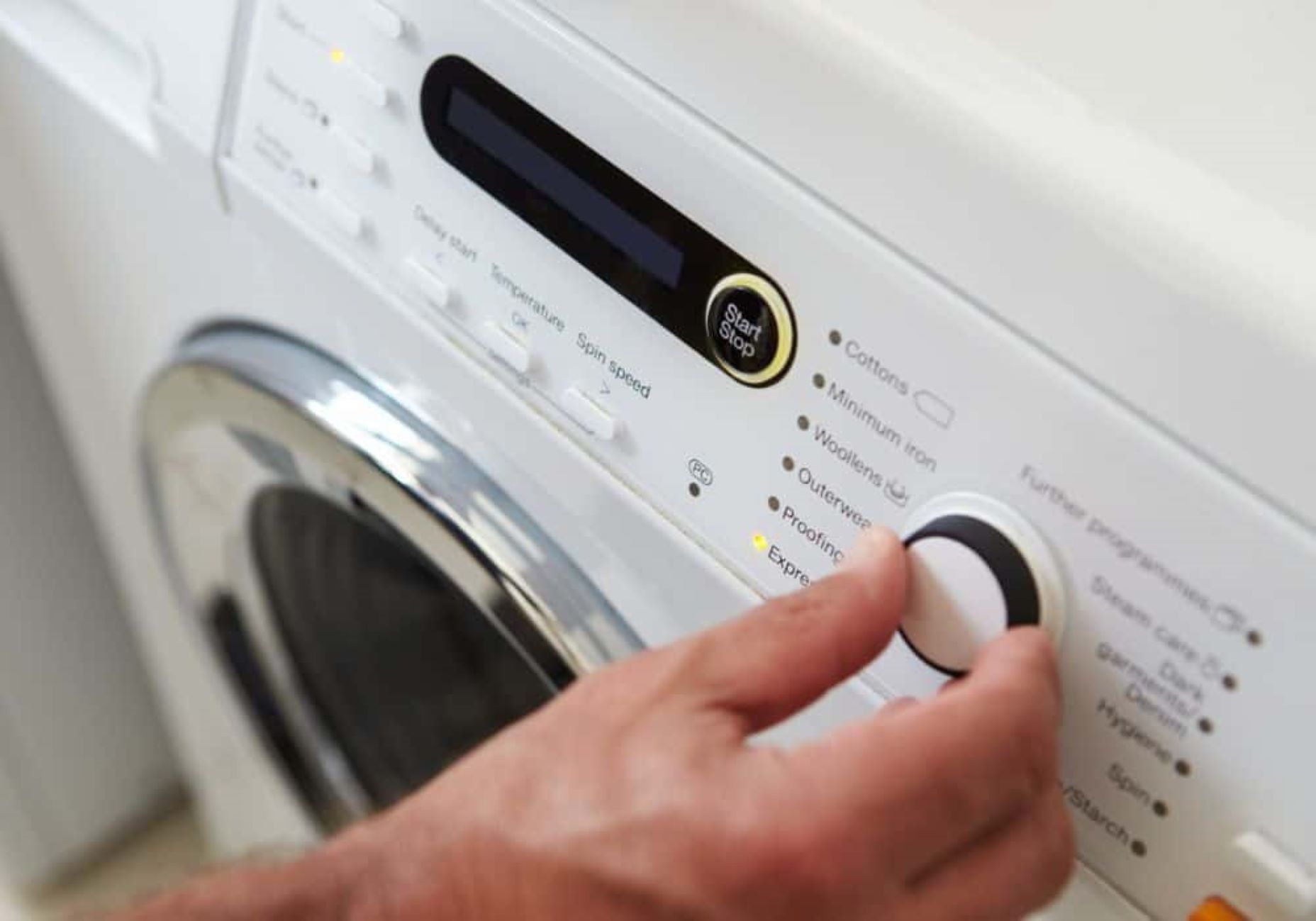
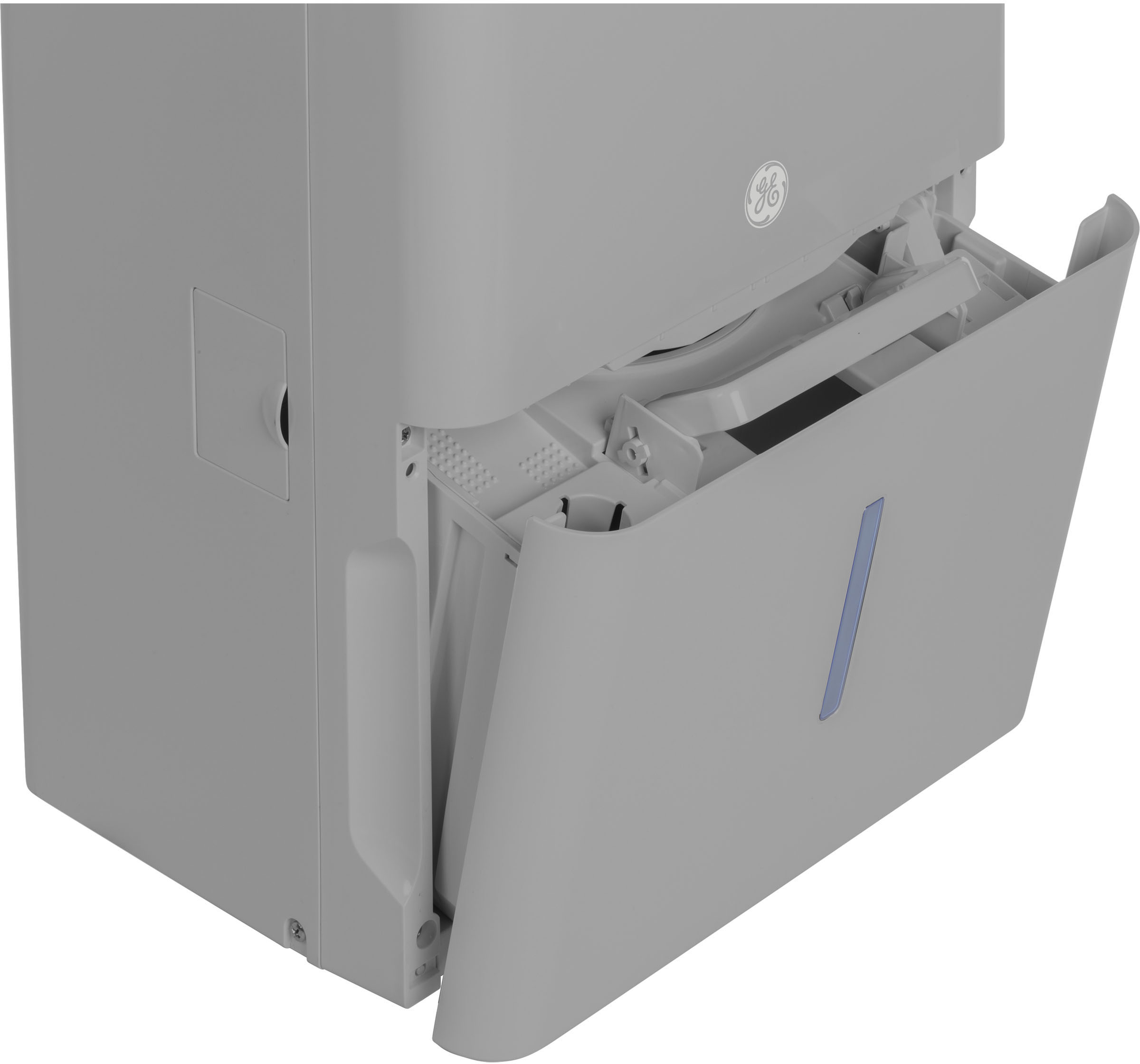

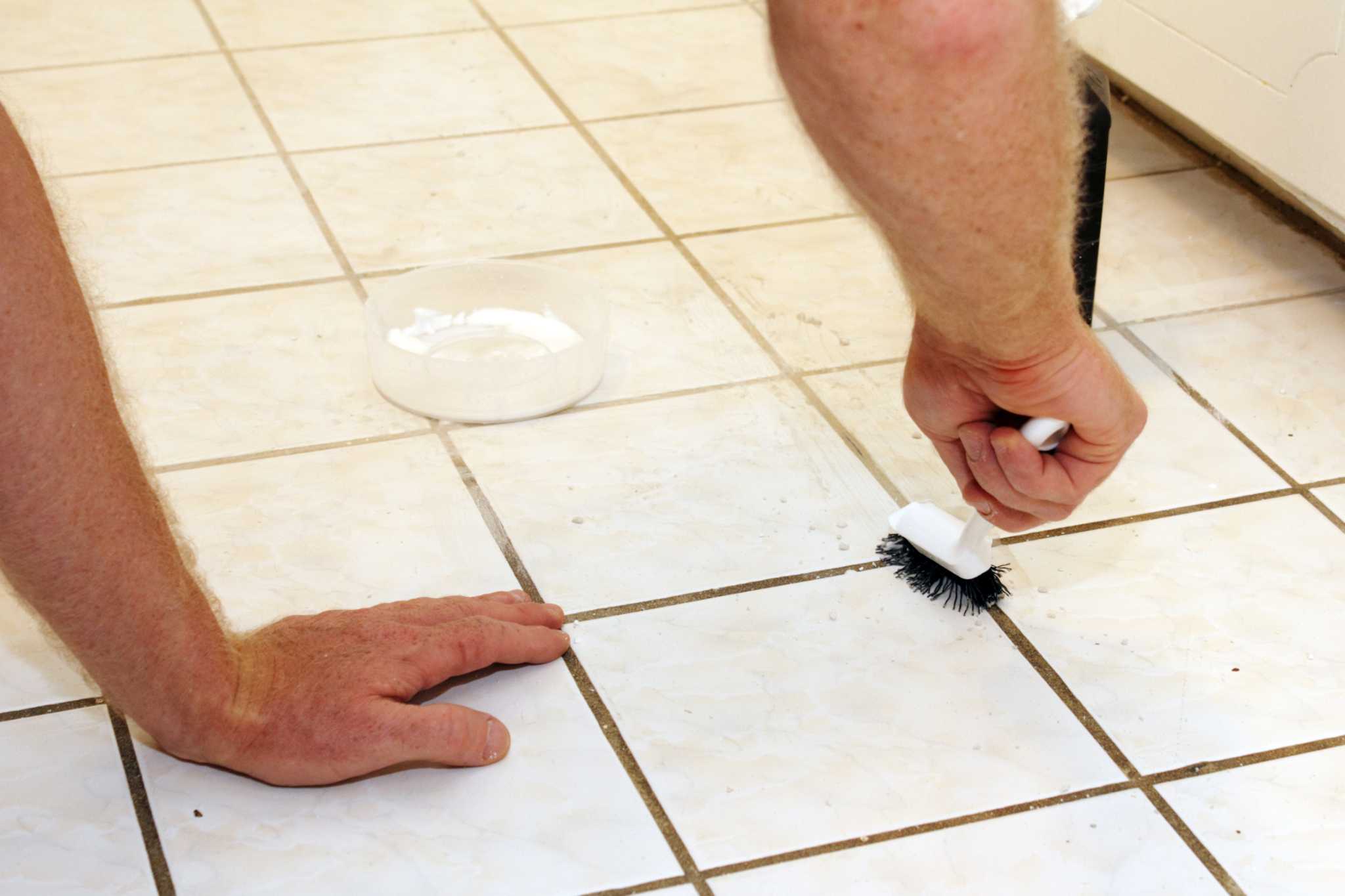

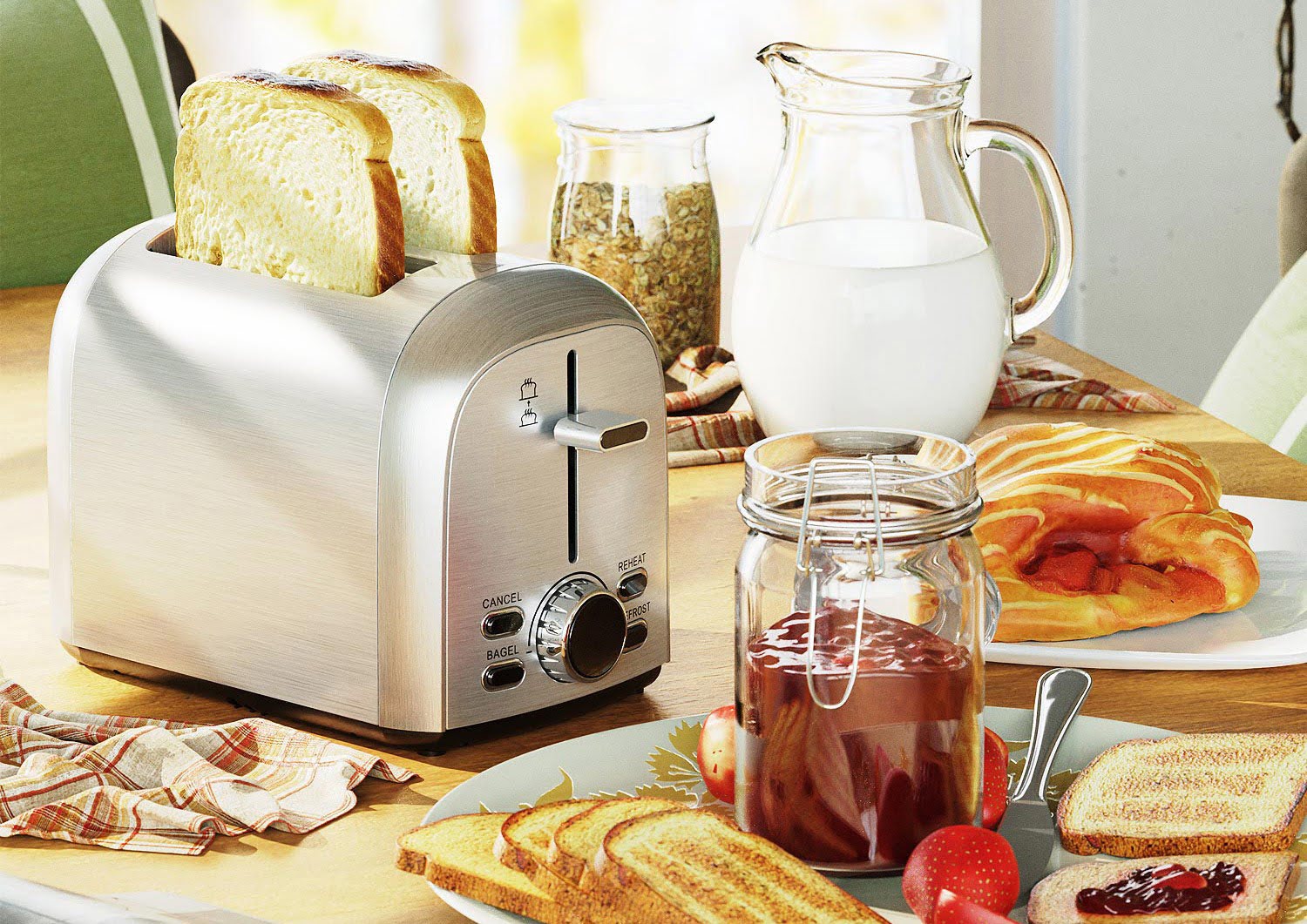



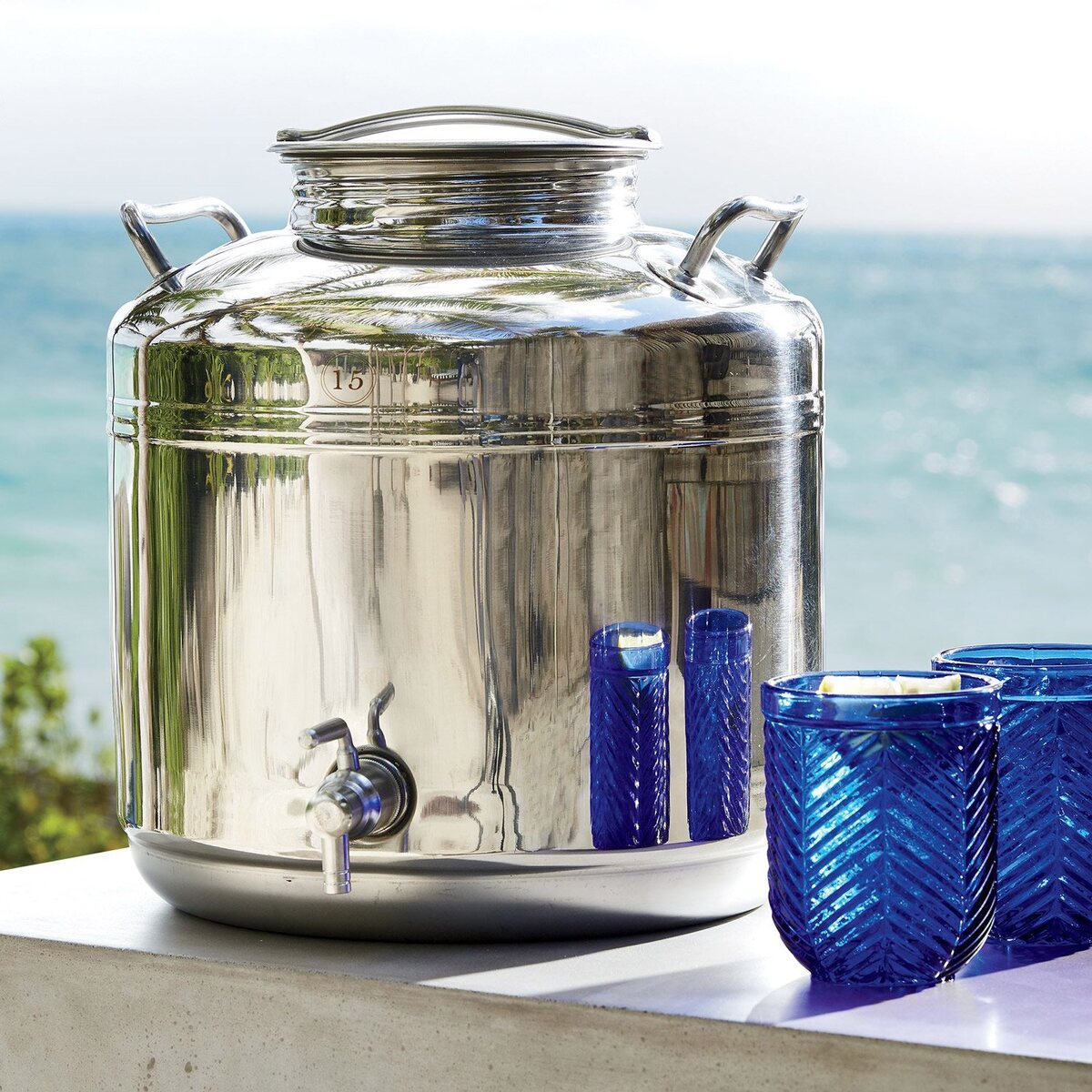



0 thoughts on “How To Remove Stains From Stainless Steel—Even Dark Water Stains”